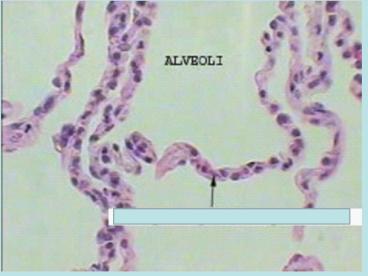Pay attention to how many cells there are. - PowerPoint PPT Presentation
1 / 29
Title:
Pay attention to how many cells there are.
Description:
Skin Cancer Most skin tumors are benign and do not metastasize A crucial risk factor for nonmelanoma skin cancers is the disabling of the p53 gene Newly developed ... – PowerPoint PPT presentation
Number of Views:84
Avg rating:3.0/5.0
Title: Pay attention to how many cells there are.
1
(No Transcript)
2
(No Transcript)
3
(No Transcript)
4
(No Transcript)
5
(No Transcript)
6
- Pay attention to how many cells there are.
- BONUS Name that cell
8.
7
(No Transcript)
8
(No Transcript)
9
(No Transcript)
10
The Integumentary System
11
Functions of the Integumentary System
- Protection
- Body temperature regulation
- Dilation
- Constriction
- Sweat gland secretions
- Cutaneous sensation
- Metabolism
12
Three major regions
13
Cells of the Epidermis
- Keratinocytes
- Melanocytes
- Langerhans cells
- Merkel cells
14
THICK vs THIN skin
15
Epidermis
- Five layers
- Stratum corneum dead cells keratin dominate
cells can become thick from irritation - Stratum lucidum Present in thick skin only, dead
cells - Stratum granulosum cells dying begin
keratinization - Stratum spinosum living cells, keratin
generation - Stratum basale youngest cells specialized
cells present
16
Dermis
- Strong, flexible connective tissue
- Cell types fibroblasts
- macrophages
- mast cells
- white blood cells
- Composed of two layers
- papillary and reticular
17
Skin Color
- Three pigments contribute to skin color
- Melanin
- yellow to reddish-brown to black pigment
- Freckles and pigmented moles
- Carotene
- yellow to orange pigment
- Hemoglobin
- reddish pigment
18
Fingerprint Characteristics
19
Integumentary Accessories
20
Sweat Glands
- Eccrine sweat glands
- Apocrine sweat glands
- Ceruminous glands
- Mammary glands
21
Sebaceous Glands
- Simple alveolar glands
- Androgen
- Sebum
- Lubrication
- Complications
22
Nails
- Consist of
- free edge
- Body
- Root
- Cuticle
- Lunula
- keratin
Growth- 0.5 mm/week ? fingernails faster than toe
nails why?
23
Hair
- Filamentous strands
- of dead keratinized cells
- Functions?
- Hintthere are 6
- Location
24
Hair Function and Distribution
- Functions of hair include
- Helping to maintain warmth
- Alerting the body to presence of insects on the
skin - Guarding the scalp against physical trauma, heat
loss, and sunlight - Hair is distributed over the entire skin surface
except - Palms, soles, and lips
- Nipples and portions of the external genitalia
25
Hair Follicle
- Root sheath extending from the epidermal surface
into the dermis - Deep end is expanded forming a hair bulb
- A knot of sensory nerve endings wraps around each
hair bulb - Bending a hair stimulates these endings, hence
our hairs act as sensitive touch receptors
26
Hair Follicle
Figure 5.6a
27
Hair Follicle
Regions shaft, root, medulla (inner), cortex
(outer), cuticle (cover)
28
Types of Hair
- Vellus pale, fine body hair found in children
and the adult female - Terminal coarse, long hair of eyebrows, scalp,
axillary, and pubic regions
29
Hair Thinning and Baldness
- Alopecia hair thinning in both sexes
- True, or frank, baldness
- Genetically determined
- Sex-influenced condition
- Male pattern baldness
30
Rule of Nines
Figure 5.8a
31
Developmental Aspects of the Integument Fetal
- Lanugo
- Vernix caseosa
32
Adolescent to Adult
- Oil, hair and acneoh my!
- Sweat!
- Cumulative environmental assaults
- Scaling
- Dermatitis
33
Developmental Aspects of the Integument Old Age
- Replacement of cells slows and skin gets thinner
- Decreased lubrication
- Decreased elasticity
- Loss of subcutaneous tissue
- Decreased numbers of
- Melanocytes
- Langerhans cells
34
Skin Cancer
- Most skin tumors are benign and do not
metastasize - A crucial risk factor for nonmelanoma skin
cancers is the disabling of the p53 gene - Newly developed skin lotions can fix damaged DNA
35
Skin Cancer
- The three major types of skin cancer are
- Basal cell carcinoma
- Squamous cell carcinoma
- Melanoma
36
Basal Cell Carcinoma
- Least malignant-most common skin cancer
- Stratum basale cells proliferate and invade the
dermis and hypodermis - Slow growing and do not often metastasize
- Can be cured by surgical excision in 99 of the
cases
37
Squamous Cell Carcinoma
- Arises from keratinocytes of stratum spinosum
- Arise most often on scalp, ears, and lower lip
- Grows rapidly and metastasizes if not removed
- Prognosis is good if treated by radiation therapy
or removed surgically
38
Melanoma
- Cancer of melanocytes is the most dangerous type
of skin cancer because it is - Highly metastatic
- Resistant to chemotherapy
39
Melanoma
- Melanomas have the following characteristics
(ABCD rule) - A Asymmetry the two sides of the pigmented
area do not match - B Border is irregular and exhibits indentations
- C Color (pigmented area) is black, brown, tan,
and sometimes red or blue - D Diameter is larger than 6 mm (size of a
pencil eraser)
40
Melanoma
- Treated by wide surgical excision accompanied by
immunotherapy - Chance of survival is poor if the lesion is over
4 mm thick
41
Burns
- First-degree only the epidermis is damaged
- Symptoms-localized redness, swelling, and pain
- Second-degree epidermis and upper regions of
dermis are damaged - Symptoms mimic first degree burns, but blisters
also appear - Third-degree entire thickness of the skin is
damaged - Burned area appears gray-white, cherry red, or
black there is no initial edema or pain (since
nerve endings are destroyed)
42
Rule of Nines
- Estimates the severity of burns
- Burns considered critical if
- Over 25 of the body has second-degree burns
- Over 10 of the body has third-degree burns
- There are third-degree burns on face, hands, or
feet































